RC-135 Rivet Joint Spy Flights From Alaska To Grow Thanks To New Unit
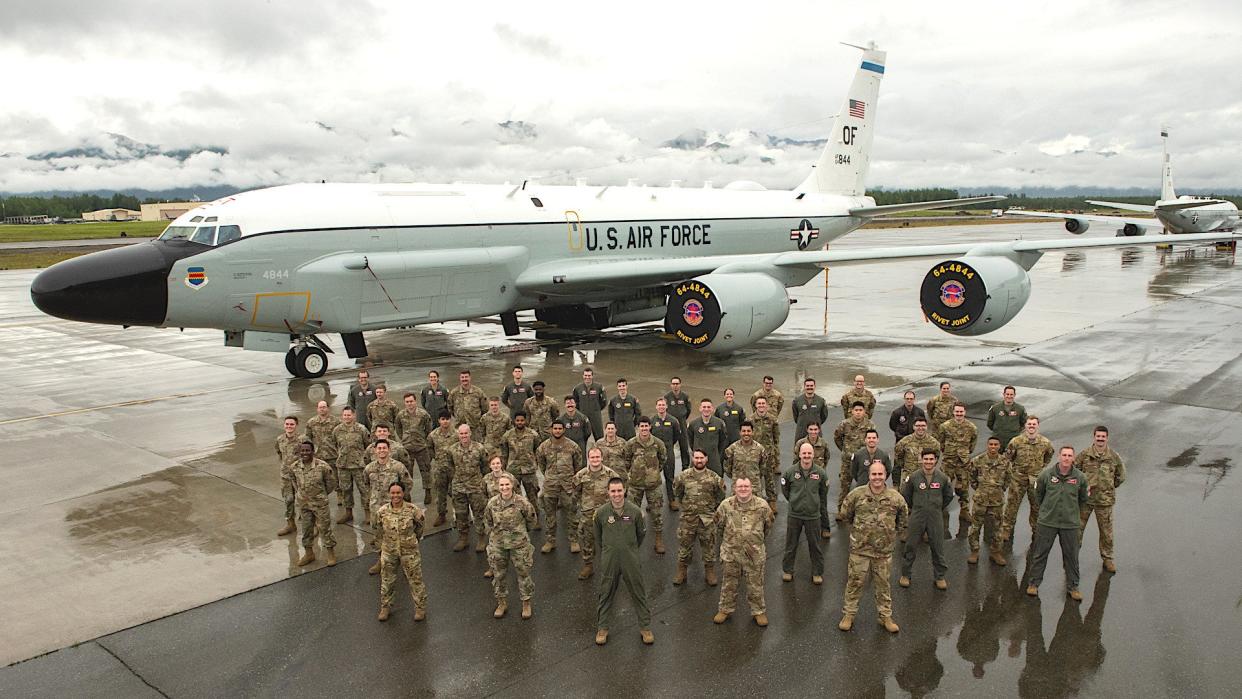
Increased demand for RC-135V/W Rivet Joint spy plane sorties in the Pacific has led the U.S. Air Force to create a new unit in Alaska to help manage those operations. From Joint Base Elmendorf-Richardson, the Rivet Joints will be well-positioned to gather intelligence on areas of interest in the northern end of the Pacific and the increasingly strategic Arctic region.
The Air Force announced the creation "recently" of 55th Operations Group, Detachment 1 at Joint Base Elmendorf-Richardson, which is in Anchorage in southeastern Alaska, in a press release yesterday. 55th Operations Group is part of the 55th Wing at Offutt Air Force Base in Nebraska.
"The new detachment will... serve as a strategic launch and recovery point for RC-135V/W Rivet Joint operations and exercises in the region," according to the Air Force.
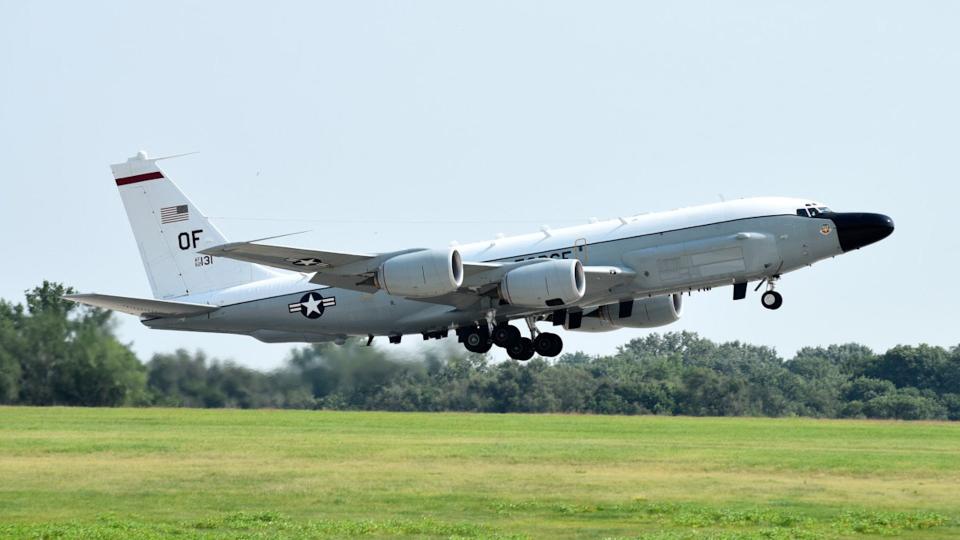
The Air Force's airliner-sized Rivet Joint aircraft are powerful multi-purpose intelligence collection platforms that are designed to detect, geolocate, categorize, and monitor a variety of different signals and whatever is transmitting them. As such, the jets are capable of gathering useful information about a variety of emitters, including air defense radars and command and control nodes, and then helping in the creation of so-called "electronic orders of battle" detailing the capabilities and disposition of those assets. They can also be used to intercept communications chatter. Onboard signals and electronic warfare specialists, as well as linguists, allow for immediate processing of any collected data. You can read more about the overall capabilities of the RC-135V/Ws, of which the Air Force has 17, here.
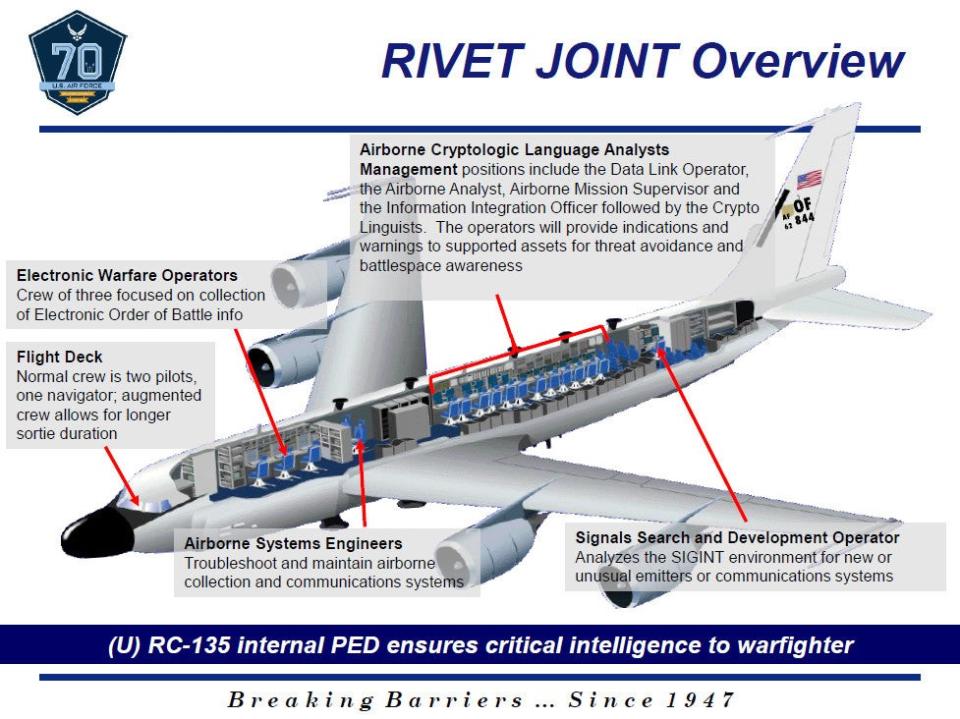
Joint Base Elmendorf-Richardson also hosts the headquarters of the 11th Air Force, the service's top command in Alaska, and its 3rd Wing, which operates a mix of F-22 Raptor stealth fighters, E-3 Sentry Airborne Warning Control System (AWACS) radar planes, C-17 Globemaster III airlifters, and C-12 light utility aircraft. It is also home to the Alaska Air National Guard's 176th Wing, which has additional C-17s, as well as HC-130 Combat King rescue aircraft and HH-60 Pave Hawk rescue helicopters.
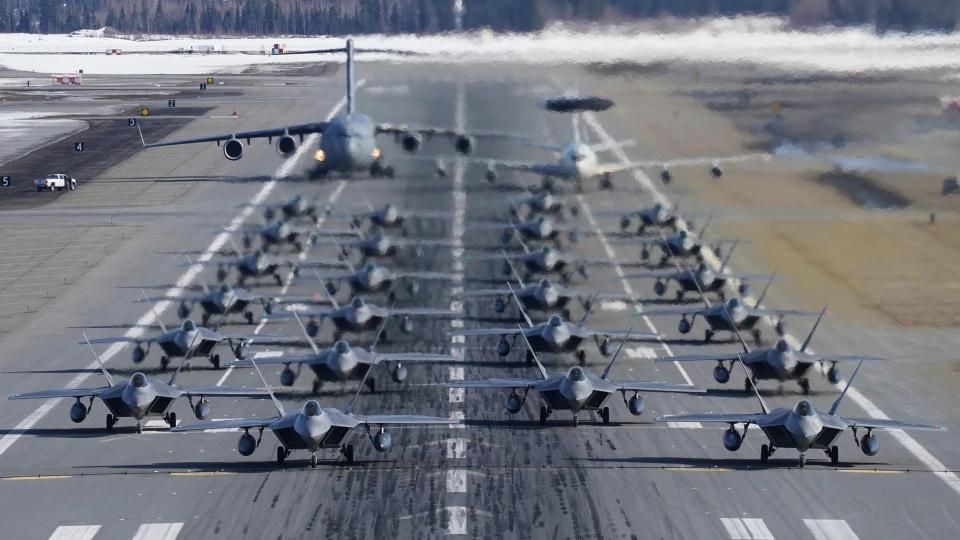
When exactly this new detached element of the 55th Operations Group was established is unclear. However, plane spotters using online flight tracking software have been noticing Rivet Joint flights from Joint Base Elmendorf-Richardson, which was not previously a typical operating location for these aircraft, since at least May.
https://twitter.com/MeNMyRC1/status/1679138981051609090 https://twitter.com/MeNMyRC1/status/1656035974512558090 https://twitter.com/thenewarea51/status/1654640605413212165
Prior to this, the main launch point for RC-135V/W sorties across much of the Indo-Pacific region is Kadena Air Base in Japan. That base is also a major hub for Pacific-focused operations involving other intelligence, surveillance, and reconnaissance (ISR) aircraft types assigned to the 55th Wing, such as the RC-135S Cobra Ball, RC-135U Combat Sent, and WC-135 Constant Phoenix.
The Air Force has also used Eielson Air Force Base in Alaska and Naval Support Facility Diego Garcia in the Indian Ocean as more limited staging locations for Rivet Joint stories, as well as those by other RC-135s and WC-135s, in the past. During the Cold War, Shemya Air Force Base in Alaska's Aleutian Island chain, since renamed Eareckson Air Station, was heavily utilized for RC-135 operations in the Pacific, as you can read more about here.
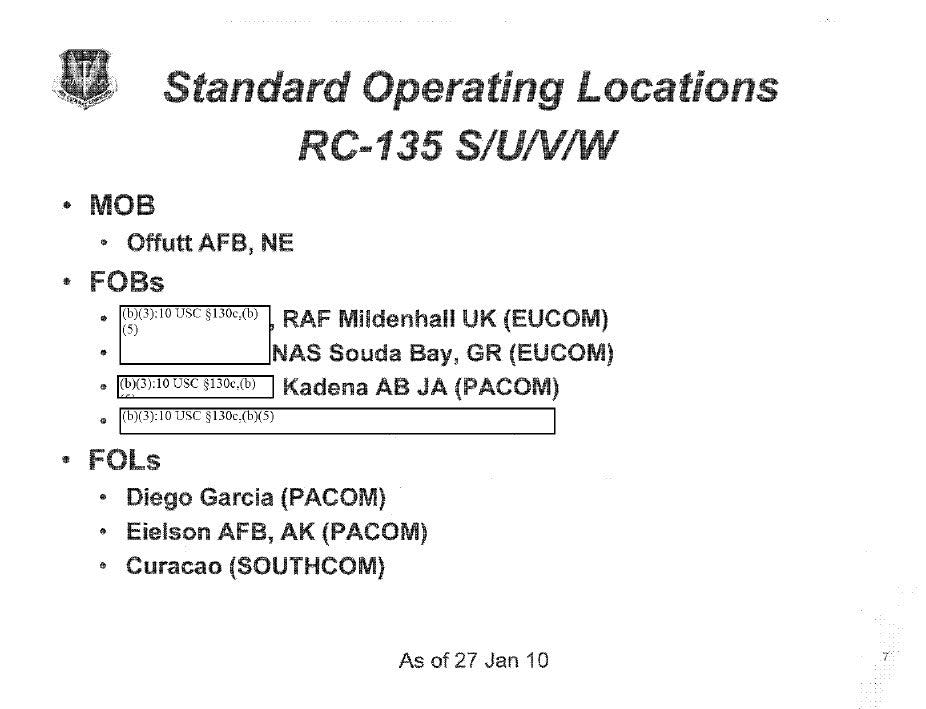
The creation of the 55th Operations Group, Detachment 1 at Joint Base Elmendorf-Richardson also comes amid what the service has described as a "mega-project" there to extend one of its two runways to help it better support operations involving larger aircraft like the Rivet Joints.
"Runway 16/34 will be extended 2,900 feet to make the length of the runway 10,000 feet and the southern threshold of the runway will shift 400 feet to the north to meet airfield design requirements," according to the Air Force, which estimates the construction project will be finished in 2025. "At this time, Runway 16/34’s current length limits the operational capability of flying missions for large-frame aircraft, specifically during inclement weather."
“Quite literally, the runway extension project will require us to move a mountain of nearly 12 million cubic yards of excavation,” U.S. Army Col. Damon Delarosa, head of the U.S. Army Corps of Engineers - Alaska District, which is supporting the runway extension work, said last year. "This material is equal to about 800,000 dump truck loads. If parked bumper-to-bumper, those vehicles would stretch from JBER [Joint Base Elmendorf-Richardson] to San Antonio, Texas."

For the Air Force's Rivet Joints, having a more permanent operating base in Alaska is expected to be a major boon to their operations.
"The new det[achment] will provide us more flexibility and allow us to expand our operations in response to increased intelligence requirements,” Air Force Col. Derek Rachel, head of the 55th Operations Group, said in a statement yesterday. "All of our platforms are constantly tasked for worldwide operations. Having this location always available and ready will enable us to respond quicker than ever before."
Even in peacetime while peering in from international waters or while flying over friendly territory, there is no shortage of areas of interest that the Rivet Joints could reach from Joint Base Elmendorf-Richardson. This includes a number of major Russian air and naval bases in the far eastern part of that country and on islands in the Arctic. Sections of northern China and the Korean Peninsula would be readily within range, as well.
In addition, while the new detachment at Joint Base Elmendorf-Richardson is currently focused on supporting Rivet Joint operations, it will also be able to handle future flights there involving Cobra Ball, Combat Sent, and Constant Phoenix aircraft, according to the Air Force. This will provide important flexibility for those types, too. The Air Force only has three RC-135S and two RC-135Us, which are more specifically configured for gathering intelligence about missile launches and electronic signals, respectively. It plans to eventually have a fleet of three WC-135Rs, which conduct nuclear and radiological intelligence gathering.
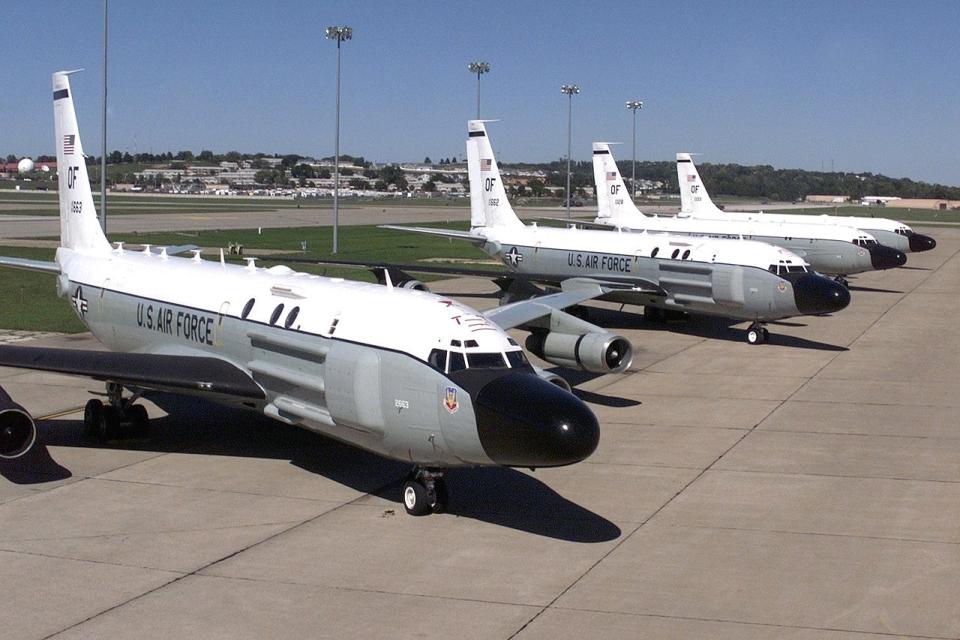
Beyond all this, the Air Force has also been very actively working to expand its basing options, in general, especially in the Indo-Pacific region. Being able to disperse forces, including high-demand, low-density ISR assets, during an actual conflict, such as a high-end fight against China, would help reduce vulnerability and ensure critical operations could continue, at least to some degree even in very challenging scenarios. That being said, Joint Base Elmendorf-Richardson is a large, well-established facility that could be high on the list of priority targets for a near-peer adversary in the opening phases of a large-scale conflict. At the same time, its relative remoteness could offer an additional lay of protection.
Geopolitical friction between the United States and China, as well as Russia, globally, are clear drivers behind the underlying increased demand for Rivet Joint sorties, as well as ISR assets more broadly, in the Pacific and the Arctic. The has been something of a resurgence in aggressive responses to American ISR flights by the Chinese and Russian militaries, which the American authorities often characterize as unsafe and unprofessional, in recent years. This has included potentially dangerous intercepts of RC-135s in the Pacific by Chinese fighters.
https://www.youtube.com/watch?v=zu2Jwf_eaOY
In the Pacific, beyond China and Russia, North Korea remains a source of concern that the U.S. military heavily monitors, as well. There are other national security issues in these regions, including sanctions violations, the flow of illegal narcotics, and natural resource rights, ranging from oil and natural gas to fish, too. Though it's not well known, U.S. military ISR and other aircraft, including Rivet Joints, are often employed to keep tabs on these kinds of illicit activities.
All told, it is not surprising that demand for Rivet Joints, as well as other ISR platforms, is only growing in the Pacific. Joint Base Elmendorf-Richardson is now set to be an important hub to meet those intelligence-gathering needs.
Contact the author: joe@thedrive.com

